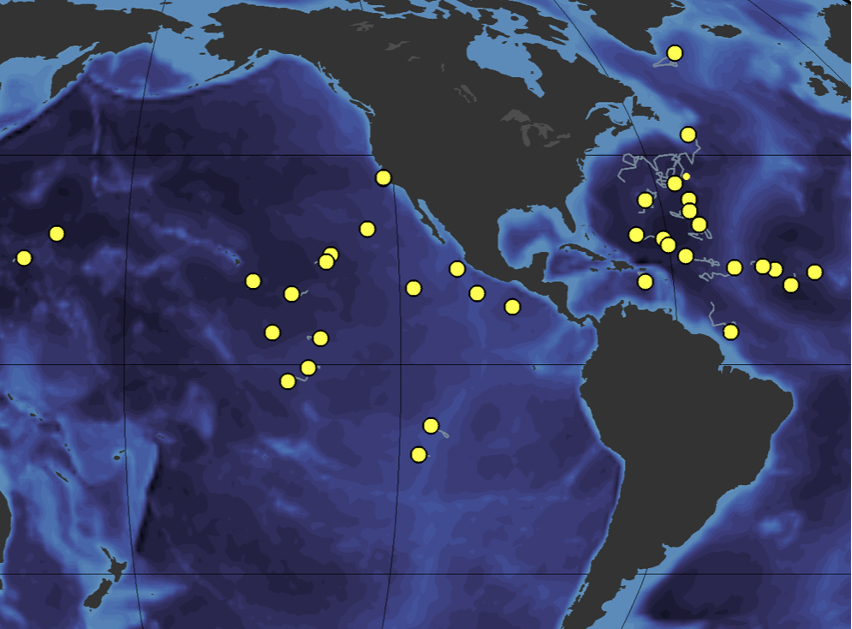
Locations of GO-BGC floats deployed to date in the Atlantic and Pacific oceans. By 2025, the GO-BGC array will cover all the world’s major ocean basins. (MBARI)
The NSF-funded Global Ocean Biogeochemistry Array (GO-BGC Array) is one year old! On March 25, 2021, a GO-BGC robotic float deployed off the A20 GO-SHIP cruise in the North Atlantic sent its first profile to MBARI via satellite, marking the beginning of the observing system. Since then, the array has been built up to include 36 additional biogeochemical profiling floats that are operating in the Atlantic and Pacific oceans, collecting profiles of pH, oxygen, nutrient, chlorophyll levels from the surface to 2000 m depth. With eighteen more BGC floats to be deployed this spring, GO-BGC is meeting its first year targets and is on track to achieve a global array of 500 BGC floats by 2025.
All GO-BGC data are made freely available to the public, and we encourage others to explore and evaluate the observations. Below are examples of analyses that can be carried out using data from our biogeochemical floats – to learn how to download and work with GO-BGC data, visit the “Getting Started with GO-BGC Data” page of our website.
Data example 1: Estimating Net Primary Productivity and Carbon Export
Data example 2: Quantifying Ocean Deoygenation
Data example 3: Detecting Nitrite in Oxygen Deficient Zones
Funding for the GO-BGC Array is provided through the NSF’s Mid-scale Research Infrastructure-2 Program (MSRI-2, NSF awards 1946578 and 2110258). The GO-BGC Array is the National Science Foundation’s contribution to the Biogeochemical-Argo (BGC-Argo) project, and supports researchers at the Monterey Bay Aquarium Research Institute (MBARI), University of Washington, Scripps Institution of Oceanography at UC San Diego, Woods Hole Oceanographic Institution, and Princeton University. For more information on GO-BGC, visit our website at www.go-bgc.org.
